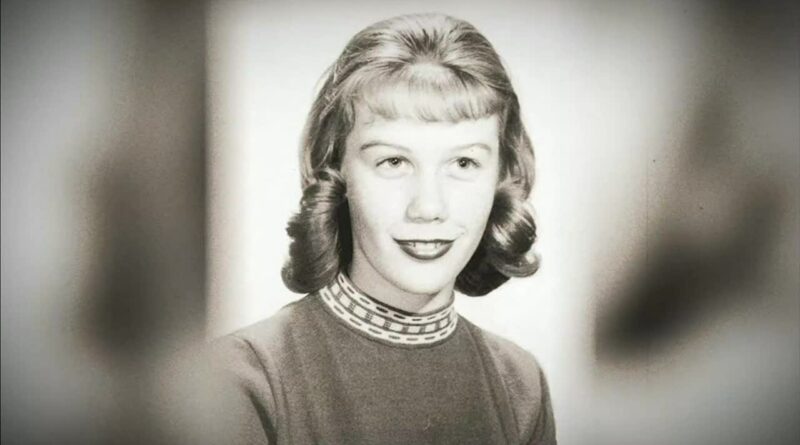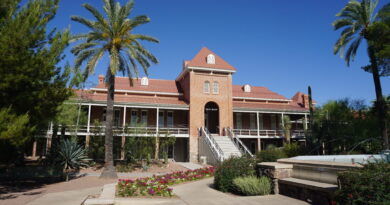Nancy Eagleson Kidnapped and Murdered in Paulding County Ohio
In the late autumn of 1960, Paulding County, Ohio, was the kind of place where neighbors waved from picket fences and church bells punctuated quiet Sunday mornings. It was here that fourteen‑year‑old Nancy Lee Eagleson grew up: the eldest daughter in a devoted family that prized hard work, community ties, and simple pleasures. Nancy was known for her gentle demeanor and bright curiosity. She excelled in school, often helping her younger classmates with homework, and spent her afternoons reading adventure stories or daydreaming beside the big oak tree in her family’s yard. Paulding High School friends remembered her laughter, and teachers recalled her thoughtful questions about history and literature.
Nancy lived just blocks from the town’s movie house, a modest brick building where local teenagers flocked on Friday nights to see the latest black‑and‑white drama or western. Her younger sister, five‑year‑old Sheryl, adored her big sister’s caring spirit; the two were inseparable companions. On November 13, 1960—a Sunday that began like any other—the Eagleson sisters dressed in warm coats and navy berets to attend an afternoon matinee. Their mother packed a small purse with a shiny nickel each for soda and snacks, and waved them off with a reminder to stay on the sidewalks and be home by dusk.
A Sister’s Last Moments
That evening, twilight settled early over Paulding’s narrow streets and farm fields. At just after seven o’clock, Nancy and Sheryl finished their movie and climbed onto the curb at the junction of Route 111 and Maple Street. They paused at a chrome‑trimmed counter for sweet sodas under neon lights, chatting about the film’s heroic ending. Then they stepped onto the pavement to begin the short walk home—no more than ten minutes, past the church and the hardware store, then onto their block.
Sheryl, clutching Nancy’s hand, recalled feeling a sudden flicker of unease as it grew darker. Cars rattled by on the highway; a brisk wind chased fallen leaves across the road. They had only gone a few yards when a dark sedan slowed beside them and a man in a heavy overcoat and fedora called out, offering them a ride. Nancy politely declined, tugging her sister onward. The car vanished around a curve, and for a moment all seemed normal.
The Abduction on Route 111
Minutes later, the silent night was shattered when the same vehicle circled back. The engine’s growl echoed off distant barns as it slowed again beside the girls. The man emerged, overcoat collar turned up, black horn‑rimmed glasses reflecting the dull glow of the headlights. He crossed the narrow strip of ground in swift, certain steps. Nancy and Sheryl froze; the stranger’s calm voice carried in the chill air as he insisted on giving them a ride home.
When Nancy stood firm, the man’s hand shot out, grabbing her arm and forcing her to the ground. Sheryl screamed and tried to intervene, but he struck the child’s stomach, sending her sprawling onto the damp pavement. Nancy struggled, but the man was stronger. He hauled her into the back seat of the sedan, the door slamming shut behind her. Then the car sped away, its red taillights blinking into the distance. Sheryl lay trembling on the curb until a passing motorist stopped to help and bring her safely home.
Discovery of the Crime
In the hours that followed, panic gripped the Eagleson household. Neighbors and county deputies scoured every road and field, flashlights bobbing under half‑moon skies. Sheryl’s trembling account—her sister dragged into a car—guided the frantic search. Yet as midnight passed and dawn neared, fear deepened into dread.
At approximately 2:30 a.m. on November 14, two local men hunting raccoons stumbled upon a haunting scene in a wooded area near “the Junction,” eight miles from the abduction site. Amid twisted underbrush, they discovered Nancy’s body, her coat buttoned to the throat, her shoes tied. Her undergarments lay beside her, unworn. There were no signs of a prolonged struggle in the clearing where she fell; the killer had left quickly, confident of escape.
The Initial Crime Scene and Autopsy
Deputies cordoned off the area, careful not to disturb footprints or tire tracks in the leaf‑strewn ground. Investigators photographed every angle by flashlight, collected torn fibers and bits of fabric lodged in low branches, and bagged a single spent .22‑caliber shell casing nearby. Forensic science in 1960 was limited—ballistic tests could match calibers but not trace bullets to specific weapons. The coroner’s report noted a single gunshot wound beneath Nancy’s chin and evidence of sexual assault. At the time, the killer’s profile was skeletal: an adult white male of medium build, clad in “church clothes,” with a dark sedan of unspecified make.
Community Shock and Mourning
Word of Nancy’s murder spread like wildfire through Paulding. By mid‑morning on November 14, flowers and notes adorned the family’s front yard. Local bakeries donated loaf after loaf of bread for the Eagleson family, while the American Legion held silent vigils at dusk. On November 18, nearly five hundred mourners filled the pews of the Church of Christ for Nancy’s funeral. Neighbors sang hymns and shared memories of her gentle smile. The news made headlines in surrounding towns, and radio stations issued appeals for witnesses.
School friends pinned black armbands over their coats; even the county sheriff’s office had a gathering in remembrance. Yet beneath all the ritual sorrow lay a burning question: who could commit such a brutal act against a child on a quiet country road?
The Investigation in 1960
Sheriff deputies and state troopers followed every lead. They interviewed Nancy’s classmates, pursued rumors of a local drifter seen in town that weekend, and administered polygraphs to a dozen suspects. A prominent local restaurant owner, Virgil Johnson, submitted to questioning and polygraph on December 2, then was publicly cleared. Teenager Robert Lee Stovall was questioned in mid‑November; his blood‑stained coat and fantastical alibi earned suspicion but no charges. By early January 1961, the reward fund topped $6,500, but no concrete breakthroughs materialized.
Detectives cataloged witness statements, noting that Sheryl’s description—from her trauma—belied incredible clarity: the glasses, the fedora, the overcoat collar. Yet those distinctive clues produced no match in county records. Tire impressions hinted at a popular family sedan model, but rubber wears down, and no licensing plate was left behind. As winter melted into spring, the trail grew cold. Evidence languished in dusty boxes; memories faded in sleepy county offices.
Forensic Limitations and Missed Leads
The tools of crime‑fighting in 1960 lacked the power of modern laboratories. There was no DNA profiling, no computerized databases of fingerprints, no rapid cross‑county bullet comparisons. Substance‑preservation protocols were rudimentary; many soft‑tissue samples deteriorated before analysis. Investigators prioritized local suspects, and in small towns, loyalties run deep—an outsider drew suspicion, while a respected sheriff’s deputy enjoyed deference that shielded him from scrutiny.
Records show that Clair “Bud” Paulus, a deputy with a controversial history of accusations, was never fully questioned; a dossier on alleged misconduct sat unopened in a supervisor’s desk. Whether through oversight or willful neglect, that avenue would remain unexplored for decades.
Renewed Efforts and Exhumation
Nearly sixty years later, the murder of Nancy Eagleson began to stir new interest. In 2022, Nancy’s family petitioned the court to exhume her remains for modern testing. The judge granted the request, citing advances in forensic pathology. In September, a team of state‑certified forensic pathologists reopened Nancy’s casket. They discovered a second .22‑caliber bullet lodged in her skull—previously undetected—and fibers consistent with the lining of an overcoat.
The exhumation revealed small, preserved traces of botanic matter and animal hair that, under scanning electron microscopy, suggested the killer’s car interior, or perhaps clothing fibers. Although the recovered bullet’s rifling patterns were matched to a general class of handgun, without a suspect’s weapon for direct comparison, investigators faced the same roadblock as 1960: no gun to test, no name to anchor the case.
Composite Sketch and Public Appeal
In October 2023, nearly 63 years after the crime, the Ohio Bureau of Criminal Investigation teamed with Nancy’s now‑grown sister, Sheryl, to produce composite sketches. One portrait, rendered without facial detail, captured the shape of the man’s jaw and cheekbones; the other included generic eyes and nose, hinting at likeness. Both bore the fedora’s brim, the overcoat collar turned up, and the dark glasses with thick frames that had haunted Sheryl’s childhood recollections.
State and local law enforcement plastered the sketches on bulletin boards, social media pages, and morning‑drive radio programs. The Paulding County Sheriff’s Office urged anyone with the slightest memory—a glimpse of a dark sedan between dusk and nightfall—to step forward. Calls trickled in, most yielding dead ends. Yet a handful of tips referenced a deputy who frequented that stretch of road in the late 1950s, raising fresh questions about long‑buried misconduct claims.
Emerging Suspects and Controversies
Among the revived inquiries was the long‑shadowed name of Clair “Bud” Paulus, the former deputy indicted in 1987 for abusing another teenage girl. Paulus denied all accusations before taking his own life that same year. His personnel file, once sealed, has since been unredacted by archival order, revealing complaints of lewd conduct and unexplained absences on the night of November 13, 1960.
While some investigators caution against assuming guilt without hard evidence, others view Paulus’s profile—his access to law enforcement databases, his neatly kept squad car, and his familiarity with patrol routes—as too striking to ignore. The Eagleson family has called for anyone who encountered Paulus to share memories, no matter how small the detail: a conversation about church activities, a remark about a trip out of town, or a fleeting expression of unease he once confided.
Legacy and Ongoing Hope for Justice
Decades after her death, Nancy’s story remains a poignant reminder of lives shattered by violence and the limitations of mid‑century investigations. In Paulding County, annual vigils are held at the spot where her abduction began, candles flickering beneath crisp November skies. Scholarships in her name support local students who pursue criminal justice or forensic science, ensuring her legacy fuels the pursuit of truth.
Her sister Sheryl, once a frightened child, now dedicates her life to victim advocacy—traveling to Ohio State University to speak on cold‑case techniques, lecturing at law‑enforcement conferences, and mentoring the next generation of forensic pathologists. Though no arrest has been made, and no confession delivered, the Eagleson family persists in seeking closure. Every new tip, every forensic breakthrough, offers a glimmer of hope that Nancy’s killer may one day face accountability.
As technology advances and investigative priorities shift, the case of Nancy Lee Eagleson stands as both a cautionary tale of criminal justice’s past shortcomings and a testament to enduring love. Six decades may have dulled some memories, but in a community woven together by shared history, her name still commands reverence—and an unyielding call for justice.
Discover more from City Towner
Subscribe to get the latest posts sent to your email.





A very sincere and moving presentation of the incident that occurred so long ago….my prayers go out to any family that looses a loved one in such a tragic way. Altha